Your Cart is Empty
Menu
-
- Shop by Type
- End of Line Sale Items
- New In
- Viking Gifts Under $40
- Hand Forged Axes
- Silver Viking Jewelry
- Stainless Steel Jewelry
- Cremation Jewelry
- Necklaces and Pendants
- Hand Carved Wooden Pendants
- Kings Chains
- Viking Drinking Horns
- Pendant Chains
- Rings
- Bracelets
- Earrings
- Beard Beads and Beard Rings
- Collectables
- Ceramic Mugs
- Street Wear
- Horn Jewelry
- Bronze and Pewter Jewelry
- Shop by Theme
- Viking Axe
- Celtic Jewelry
- Dragon or Serpent
- Viking Raven
- Wolf / Fenrir
- Rune Jewelry
- Odin Jewelry
- Ram / Goat
- Shieldmaidens / Lagertha
- Sword, Spear or Arrow
- Thor's Hammer / Mjolnir
- Tree of Life / Yggdrasil
- Helm of Awe / Aegishjalmur
- Triquetra or Triskelion
- Valknut / Knot of Slain
- Vegvisir / Viking Compass
- Veles / Bear
- Blogs
- Help
-
- Login

Mead - The Iconic Viking Drink
Mead, an alcoholic drink made from fermented honey and water, is thought to be the world's oldest alcoholic drink, predating both beer and wine. It has long been associated with the Norse people but analysis of pottery vessels found in China suggest it might have originated here up to 9000 years ago. Other theories suggest it might have started in Africa around the same time (in Ethiopia, a drink similar to mead called tej is still brewed today).
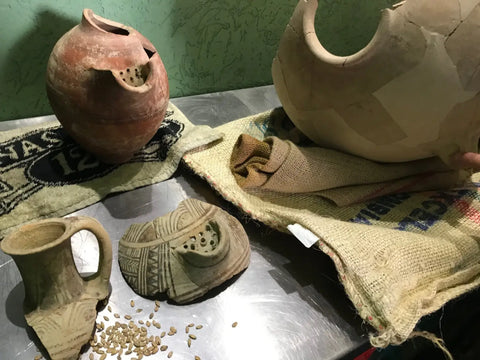
Mead may well have initially been an accidental discovery as foragers drank the contents of a beehive that had been flooded with rainwater and naturally fermented by airborne yeast. Once humans learned how to produce it on demand however, mead's popularity spread around the world and was appreciated by many civilizations including the Vikings, Egyptians, Greeks, Romans, Mayans and the Celts (Celtic mead was often produced by monks in monasteries such as Lindisfarne because the climate was too cold for growing grapes).
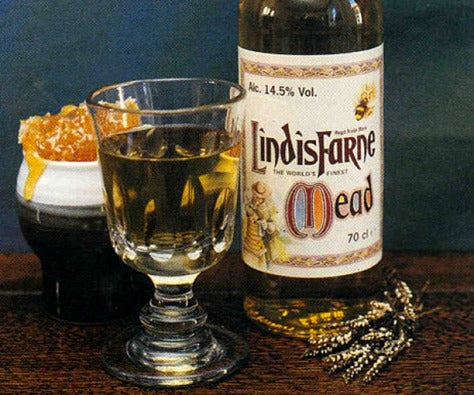
The Greeks called mead ambrosia or 'nectar of the gods' and believed it descended from heaven as dew before being collected by bees (many European cultures thought that bees were the god's messengers). This belief understandably led them to assume that mead must have magical and sacred properties that bestowed long life, health and strength (and also boosted creative powers).
The Norse and also the Celts had similar beliefs - Celtic mythology tells of a river of mead that runs through paradise, whilst in Norse Mythology mead was believed to have originated when two warring gods signed a peace treaty and spat into a bowl to seal the deal.
From this bowl Kvasir, the wisest of all men was born. Kvasir then met his death at the hands of a pair of dwarves, who collected his blood, (also known as the “Mead of Poetry”). This blood/mead was then passed from the dwarves to the Jotun (giant) Suttung but when Odin, the Norse god, learned that the mead was being held by Suttung, he ventured down to the giant’s lair, seduced his wife, and captured the mead by transforming into an eagle and swallowing it. Norse legend also states that when warriors arrive at Valhalla, they are rewarded with a draught of mead served by beautiful maidens.
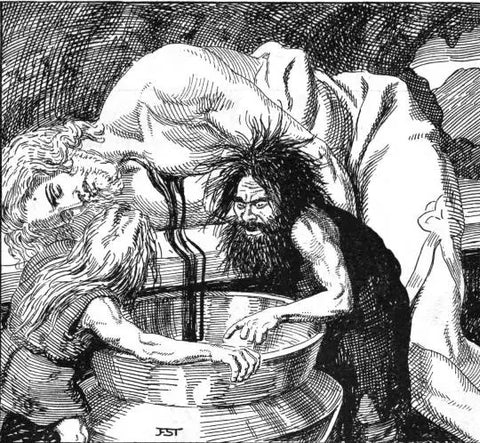
Consequently, mead was an essential ingredient in many rituals and considered a drink of royalty, often drunk on special occasions from ceremonial drinking horns or silver cups.
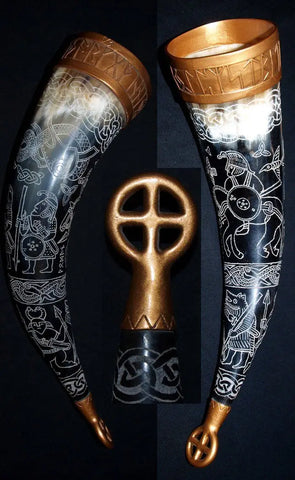
Viking mead was produced in differing qualities. The finest quality was produced from pure honey whilst a slightly lesser product (most likely drunk by those of lower social standing) was produced using the leftover crushed honeycombs once the pure honey had been drained for the expensive stuff.
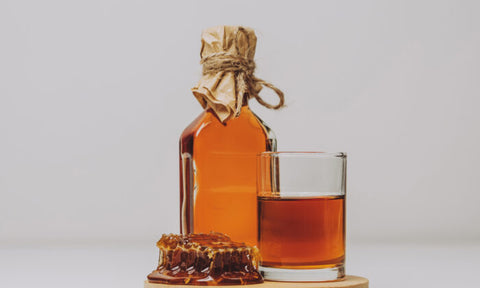
In England mead was used more as a medicinal drink. Various herbs and spices were infused into the drink to alleviate symptoms such as poor digestion and malaise. These medicinal meads were knows as 'metheglin', derived from the Celtic word for medicine.
References to the mythology of mead still exist in today's cultural references. For example, the word 'honeymoon' comes from the ancient tradition of giving bridal couples a month (or ‘moon’s worth) of mead. Mead was given to newly-weds as it was believed to increase both virility and fertility. Payment to the mead producer was often increased if the first-born child arrived quickly after the marriage and was a boy.
Today, artisan mead is gaining popularity and there are currently approximately 250 craft meaderies in the US. There are also several organizations such as the International Mead Association and the American Mead Makers Association with the aim of promoting and celebrating mead production around the globe.
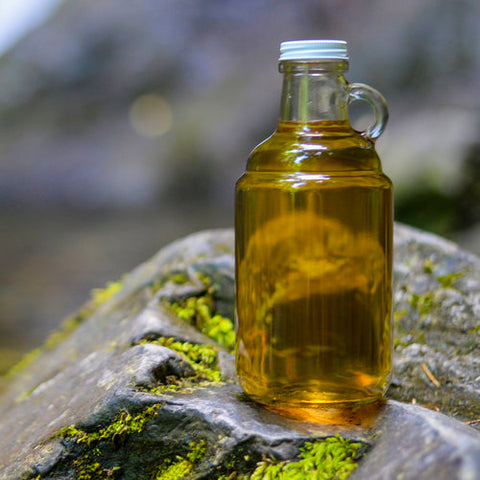
Want to try making your own mead? Here is a relatively simple recipe that can be made at home. You will need -
- A 1 Gallon/5l glass fermenter with airlock and rubber bung
- 4.5 quarts/4.5l water
- 3lb/1.4kg of pure honey
- Half packet of mead yeast such as Bullldog Mead Yeast
Start by saniitizing all the equipment to avoid bacteria from spoiling the mead. Boil the water for at least ten minutes to also ensure that it is sterile.
Warm both the water and honey so that the honey becomes more viscous and mixed easier with the water. Add all the honey to the fermenter and top up with the water, leaving about 10% of the jar empty at the top to allow for a layer of bubbles to form once the fermentation process begins. Add the bung and shake vigorously to add oxygen int the mixture (needed for the yeast).
Leave the honey and water mix to cool to around 77° F (25° C) then add approximately half the packet of yeast mix (if using yeast that doesn't already contain yeast nutrients then also add this at this stage).
Add the stopper then shake again to mix the yeast with the water and honey. Fit the airlock and leave in a dark place with moderate and consistent temperatures. Within the first few hours, you should see small bubbles forming, indicating that fermentation is taking place. This process usually lasts about a week to ten days. Leave for a further four to five weeks after fermentation has finished to allow the dead yeast to sink to the bottom and for the liquid to clear. Syphon the mead into sanitized bottles (avoiding the sediment) and leave in a cool, dark place for at least another month.
Enjoy!
Featured image courtesy of Nordic Mjød
